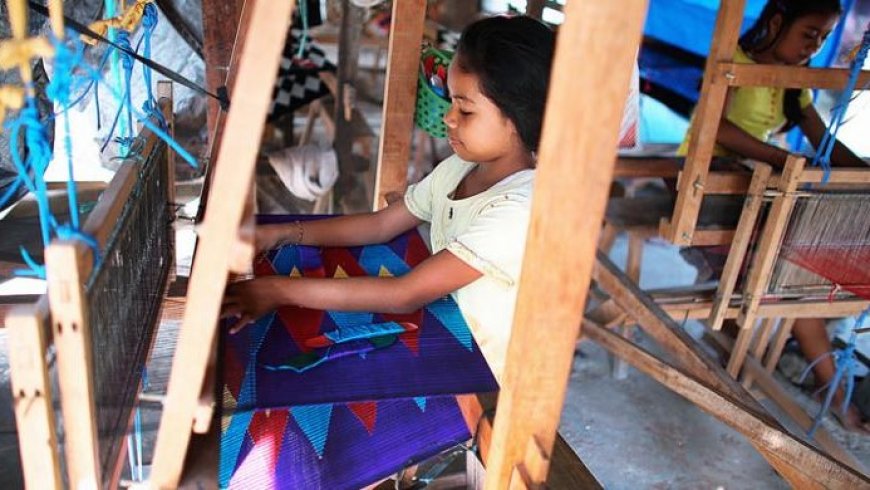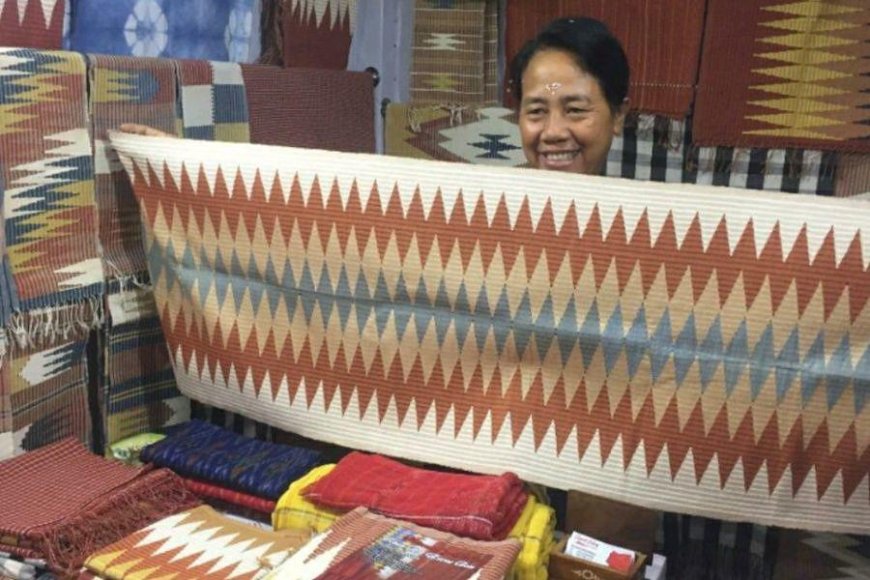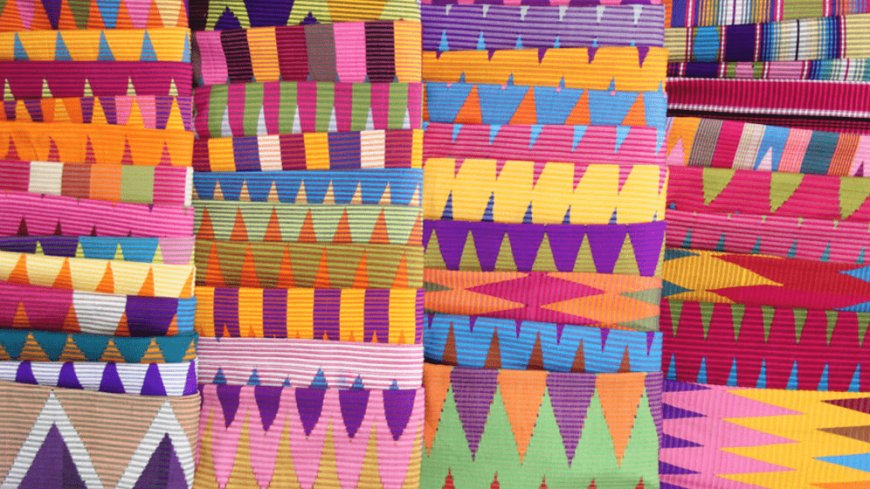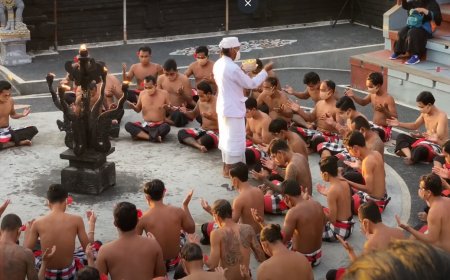Admiring the Beauty of Balinese Tenun, A Divine Touch by the Gods
Balinese tenun fabric is not just a material, but it also carries a spiritual dimension connected to beliefs in the deities. The weaving process is considered a sacred ritual that connects humans to nature and the spiritual world. The motifs are full of symbolism from Hindu mythology and the daily life of the Balinese. An example is the Cepuk Rang Rang fabric from Nusa Penida, rich in cultural and spiritual value, used in traditional ceremonies. It is a symbol of Bali's spiritual heritage for centuries.

Bali holds a rich tapestry of cultures, particularly in its traditional fabrics, most notably, tenun or woven cloth. These textiles aren't merely daily wear for the locals; they've also gained international recognition for their exquisite patterns and unique craftsmanship. For the Balinese people, tenun is more than just working with threads and fabric. Beneath the process lies a profound art rooted in myths and civilization. Within the context of Balinese religious ceremonies, tenun invariably holds a special place as sacred, enchanted textiles.
In Bali, tenun isn't merely a skill, it's also an expression of deep-seated spirituality and culture. The act of tenun itself is a ritual laden with meaning, connecting humans to nature and the spiritual realm. Each thread woven carries specific symbols imbued with profound philosophical and spiritual significance. In this process, there is a strong belief that tenun is a mystical touch by the deities, bestowing power and blessings upon every resulting fabric. In religious events, tenun fabrics undergo a transformation into something more than mere clothing. They become a means to bridge the physical world with the spiritual realm. The textiles used in these ceremonies are deemed to possess mystical powers, symbolizing protection and sanctity.
Behind each tenun fabric lies stories of daily life and the spiritual beliefs of the Balinese people. Tenun fabrics play a crucial role in identifying social status, nobility, and religious affiliation. Distinctive motifs in tenun fabrics often have connections with Hindu mythology or ancient tales, bestowing symbolic richness upon each piece. For instance, motifs depicting Dewi Sri, the goddess of rice in Hindu mythology, are often presented in tenun fabrics as symbols of fertility and abundance. Additionally, the act of tenun plays a vital role in building social connections within the Bali community. Many tenun artisans are involved in collaborative work groups known as "subak," where they assist and support one another. This creates strong social bonds and strengthens the sense of unity in Balinese society.
A tangible example of the spiritual and cultural value inherent in Balinese tenun is found in the "cepuk Rang Rang" woven fabric from Nusa Penida. The cepuk Rang Rang fabric is a highly esteemed work of art on the island, carrying profound meanings. It is often used in traditional and religious ceremonies on Nusa Penida. The interwoven motifs frequently depict natural elements such as waves, mountains, or sunsets. Each motif carries symbolic meaning, connecting humans to nature and the spiritual realm.

Cepuk Rang Rang Tenun (Photo Source: Pujangga Nagari Nusantara)
Cepuk Rang Rang tenun holds deep historical value for the people of Nusa Penida. Originally, this woven fabric was exclusively used as ceremonial attire. Ancestors of the community kept the treasure of woven fabric named Cepuk Rang Rang hundreds of years ago, reserved solely for religious ceremonies. With the passage of time, this sacred Cepuk Rang Rang fabric is now produced by the local community.
The motifs in Cepuk Rang Rang tenun contain symbols of transparency, illustrating their uniqueness and distinctiveness. It is characterized by small perforations in the woven fabric. Additionally, its motifs differ from the woven fabrics produced by communities in other districts of Bali, such as Klungkung, Karangasem, Jembrana, Tabanan, and others. Aside from the unique designs and perforated motifs, the colors are brighter, often dominated by shades of red, orange, and purple.
In its production, coloring materials can be derived from either chemical or natural sources like leaves, fruits, and specific roots. This also influences the pricing of these tenun fabrics. Cepuk Rang Rang shawls are valued at around IDR 100,000 to IDR 200,000, while the prices for wider tenun fabrics range from IDR 400,000 to IDR 1.2 million.

Cepuk Rang Rang Tenun Motifs (Photo Source: Pujangga Nagari Nusantara)
In a religious context, Cepuk Rang Rang tenun fabric is often used as body coverings or as offerings to the gods. This fabric is seen as a means of communication with the spiritual world and as a symbol of protection from malevolent forces. The precision and finesse in crafting Cepuk Rang Rang tenun fabric reflect a deep respect for the traditions and spirituality rooted in Nusa Penida society. Each tenun fabric is not just a commodity; it's also a tool to preserve purity and harmony in traditional ceremonies.
Balinese tenun is more than a material object; it's also a symbol of cultural and spiritual heritage that has been woven together for centuries. It reflects the precision, finesse, and beauty of an art bestowed by ancestors to subsequent generations. Thus, tenun is not only a part of Balinese tradition but also demonstrates the profound meanings and values it encompasses. Balinese tenun also serves as a window that opens our eyes to local wisdom and the ongoing spiritual wealth continuously renewed through every woven thread. Each woven piece is a tribute to the richness of ancestral heritage, as well as a drive to preserve it for future generations.





























































